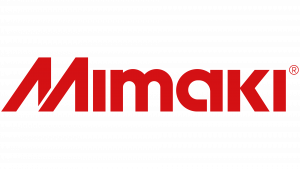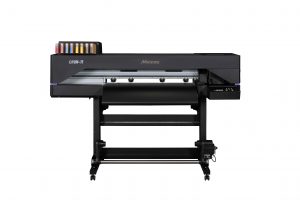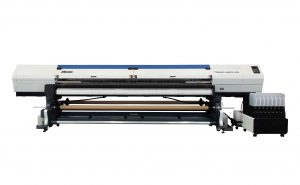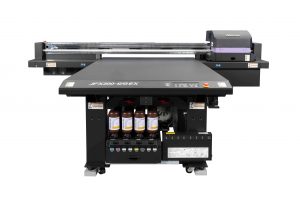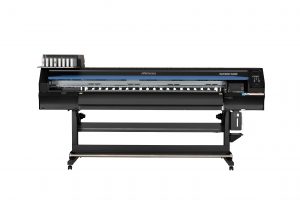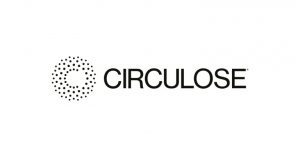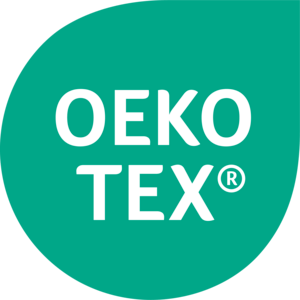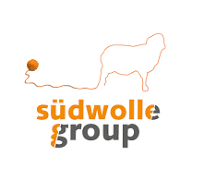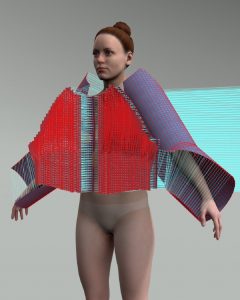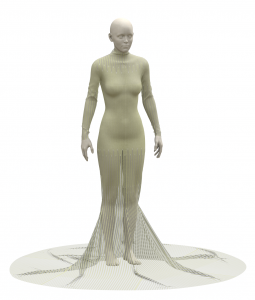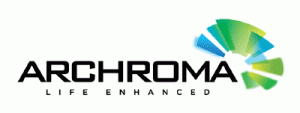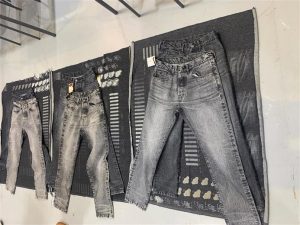 TEMPE, Ariz. — September 3, 2024 — Economic activity in the manufacturing sector contracted in August for the fifth consecutive month and the 21st time in the last 22 months, say the nation’s supply executives in the latest Manufacturing ISM® Report On Business®.
TEMPE, Ariz. — September 3, 2024 — Economic activity in the manufacturing sector contracted in August for the fifth consecutive month and the 21st time in the last 22 months, say the nation’s supply executives in the latest Manufacturing ISM® Report On Business®.
The report was issued today by Timothy R. Fiore, CPSM, C.P.M., Chair of the Institute for Supply Management® (ISM) Manufacturing Business Survey Committee:
“The Manufacturing PMI® registered 47.2 percent in August, up 0.4 percentage point from the 46.8 percent recorded in July. The overall economy continued in expansion for the 52nd month after one month of contraction in April 2020. (A Manufacturing PMI above 42.5 percent, over a period of time, generally indicates an expansion of the overall economy.) The New Orders Index remained in contraction territory, registering 44.6 percent, 2.8 percentage points lower than the 47.4 percent recorded in July. The August reading of the Production Index (44.8 percent) is 1.1 percentage points lower than July’s figure of 45.9 percent. The Prices Index registered 54 percent, up 1.1 percentage points compared to the reading of 52.9 percent in July. The Backlog of Orders Index registered 43.6 percent, up 1.9 percentage points compared to 41.7 in July. The Employment Index registered 46 percent, up 2.6 percentage points from July’s figure of 43.4 percent.
“The Supplier Deliveries Index indicated slowing deliveries, registering 50.5 percent, 2.1 percentage points lower than the 52.6 percent recorded in July. (Supplier Deliveries is the only ISM Report On Business index that is inversed; a reading of above 50 percent indicates slower deliveries, which is typical as the economy improves and customer demand increases.) The Inventories Index registered 50.3 percent, up 5.8 percentage points compared to July’s reading of 44.5 percent.
“The New Export Orders Index reading of 48.6 percent is 0.4 percentage point lower than the 49 percent registered in July. The Imports Index remained in contraction territory in August, registering 49.6 percent, 1 percentage point higher than the 48.6 percent reported in July.”
Fiore continues, “While still in contraction territory, U.S. manufacturing activity contracted slower compared to last month. Demand continues to be weak, output declined, and inputs stayed accommodative. Demand slowing was reflected by the (1) New Orders Index dropping further into contraction, (2) New Export Orders Index contracting slightly faster, (3) Backlog of Orders Index remaining in strong contraction territory, and (4) Customers’ Inventories Index at the ‘just right’ level. (For more, see the Customers’ Inventories Index summary below.) Output (measured by the Production and Employment indexes) continued in moderate contraction with production sagging further, while employment contracted slower as compared to July. Panelists’ companies reduced production levels month over month as head-count reductions continued in August. Inputs — defined as supplier deliveries, inventories, prices and imports — generally continued to accommodate future demand growth, with inventory growth attributed to a supply demand timing mismatch.
“Demand remains subdued, as companies show an unwillingness to invest in capital and inventory due to current federal monetary policy and election uncertainty. Production execution was down compared to July, putting additional pressure on profitability. Suppliers continue to have capacity, with lead times improving and shortages not as severe. Sixty-five percent of manufacturing gross domestic product (GDP) contracted in August, down from 86 percent in July. The share of manufacturing sector GDP registering a composite PMI calculation at or below 45 percent (a good barometer of overall manufacturing weakness) was 33 percent in August, a 20-percentage point improvement compared to the 53 percent reported in July. Two of the six of the largest manufacturing industries — Food, Beverage & Tobacco Products; and Computer & Electronic Products — expanded in August, compared to none in July,” Fiore said.
The five manufacturing industries reporting growth in August are: Primary Metals; Petroleum & Coal Products; Furniture & Related Products; Food, Beverage & Tobacco Products; and Computer & Electronic Products. The 12 industries reporting contraction in August — in the following order — are: Textile Mills; Printing & Related Support Activities; Nonmetallic Mineral Products; Plastics & Rubber Products; Electrical Equipment, Appliances & Components; Fabricated Metal Products; Transportation Equipment; Wood Products; Machinery; Paper Products; Chemical Products; and Miscellaneous Manufacturing.
What Respondents Are Saying
“A noticeable slowdown in business activity. Staffing and production rationalization has been triggered. Previous optimism about future growth has been dashed.” [Chemical Products]
“Backlog has dropped in half as invoicing remains strong, but orders have slowed significantly. Hoping to see orders pick back up for the fourth quarter and into 2025 but expect third quarter to remain slow for incoming orders.” [Transportation Equipment]
“After a slow start and lower year-over-year sales volume during the first half of the year, we are now seeing a mild increase in year-over-year sales volume, along with more steady growth.” [Food, Beverage & Tobacco Products]
“Business outlook is good. Recovery from the electronics slowdown is strong for the second half of the year.” [Computer & Electronic Products]
“New order intake is sluggish at best. Interestingly, even though orders are down, inquiries are up. Customers have indicated capital has been approved for equipment purchases, but they were directed to put projects on hold until the fourth quarter of 2024. This indicates the uncertainty around the election. We anticipate a strong end of the year, with a rise in backlog going into 2025.” [Machinery]
“Our order levels are on a slow, steady decline; it looks like the trend will continue through the end of the year. We are downsizing through attrition and not hiring backfills, but there have been no layoffs to date. The bright spot is a few customer programs have helped increase orders for parts, resulting in some production areas to be very busy while others have little work. Redeploying people where we can.” [Fabricated Metal Products]
“New orders continue to be strong, and inventories are slightly down as a result. Supplier lead times seem to be creeping back up in certain categories.” [Miscellaneous Manufacturing]
“Business is cooling down, and we don’t expect a rebound until after the election is over. As we build our 2025 budget, we continue to have deep concerns about the added environmental costs on energy.” [Paper Products]
“Order book remains strong for now. We are preparing for a slowdown in U.S. auto sales. We are running overtime to keep pace, as hiring hourly employees has been difficult. Some walk off the job within hours because they cannot handle factory work.” [Primary Metals]
“High interest rates are curtailing consumer spending on large discretionary spending for furniture, cabinetry, flooring and decorative trim, which has affected our industry sales potential. At the same time, pent-up demand seems to be growing for housing and remodeling. Interest rate cuts may not happen soon enough to have an impact this year.” [Wood Products]
MANUFACTURING AT A GLANCE
August 2024 |
| Index |
Series
IndexAug |
Series
IndexJul |
Percentage
Point
Change |
Direction |
Rate of
Change |
Trend*
(Months) |
| Manufacturing PMI® |
47.2 |
46.8 |
+0.4 |
Contracting |
Slower |
5 |
| New Orders |
44.6 |
47.4 |
-2.8 |
Contracting |
Faster |
5 |
| Production |
44.8 |
45.9 |
-1.1 |
Contracting |
Faster |
3 |
| Employment |
46.0 |
43.4 |
+2.6 |
Contracting |
Slower |
3 |
| Supplier Deliveries |
50.5 |
52.6 |
-2.1 |
Slowing |
Slower |
2 |
| Inventories |
50.3 |
44.5 |
+5.8 |
Growing |
From
Contracting |
1 |
| Customers’ Inventories |
48.4 |
45.8 |
+2.6 |
Too Low |
Slower |
9 |
| Prices |
54.0 |
52.9 |
+1.1 |
Increasing |
Faster |
8 |
| Backlog of Orders |
43.6 |
41.7 |
+1.9 |
Contracting |
Slower |
23 |
| New Export Orders |
48.6 |
49.0 |
-0.4 |
Contracting |
Faster |
3 |
| Imports |
49.6 |
48.6 |
+1.0 |
Contracting |
Slower |
3 |
| OVERALL ECONOMY |
Growing |
Faster |
52 |
| Manufacturing Sector |
Contracting |
Slower |
5 |
Manufacturing ISM® Report On Business® data is seasonally adjusted for the New Orders, Production, Employment and Inventories indexes.
*Number of months moving in current direction.
Commodities Reported Up/Down In Price And In Short Supply
Commodities Up in Price
Aluminum* (9); Corrugate (2); Corrugated Boxes (2); Electrical Components (4); Labor — Temporary; Maintenance, Repair and Operating (MRO) Supplies; Ocean Freight (4); Paper Products (2); Plastic Products; Plastic Resins (8); Polyethylene Resin; Polypropylene Resin (2); Road Freight; and Steel*.
Commodities Down in Price
Aluminum*; Copper (2); Electricity; Natural Gas (2); Packaging Products; Solvents; Steel* (4); Steel — Cold Rolled; Steel — Hot Rolled (4); and Steel Products (3).
Commodities in Short Supply
Electrical Components (47); Electrical Equipment (2); Electronic Components (5); Hydraulic Components (2); and Pigments.
Note: The number of consecutive months the commodity is listed is indicated after each item.
*Indicates both up and down in price.
August 2024 Manufacturing Index Summaries
Manufacturing PMI®
The U.S. manufacturing sector contracted for the fifth consecutive month in August, as the Manufacturing PMI registered 47.2 percent, up 0.4 percentage point compared to July’s reading of 46.8 percent. “After breaking a 16-month streak of contraction by expanding in March, the manufacturing sector has contracted the last five months, but at a slower rate in August. Of the five subindexes that directly factor into the Manufacturing PMI, only one (Supplier Deliveries) was in expansion territory, the same as in July. The New Orders Index remained in contraction and moved downward in August. Two of the six biggest manufacturing industries (Food, Beverage & Tobacco Products; and Computer & Electronic Products) registered growth,” says Fiore. A reading above 50 percent indicates that the manufacturing sector is generally expanding; below 50 percent indicates that it is generally contracting.
A Manufacturing PMI above 42.5 percent, over a period of time, generally indicates an expansion of the overall economy. Therefore, the August Manufacturing PMI indicates the overall economy grew for the 52nd straight month after last contracting in April 2020. “The past relationship between the Manufacturing PMI and the overall economy indicates that the August reading (47.2 percent) corresponds to a change of plus-1.3 percent in real gross domestic product (GDP) on an annualized basis,” says Fiore.
The Last 12 Months
| Month |
Manufacturing
PMI® |
Month |
Manufacturing
PMI® |
| Aug 2024 |
47.2 |
Feb 2024 |
47.8 |
| Jul 2024 |
46.8 |
Jan 2024 |
49.1 |
| Jun 2024 |
48.5 |
Dec 2023 |
47.1 |
| May 2024 |
48.7 |
Nov 2023 |
46.6 |
| Apr 2024 |
49.2 |
Oct 2023 |
46.9 |
| Mar 2024 |
50.3 |
Sep 2023 |
48.6 |
| Average for 12 months – 48.1
High – 50.3
Low – 46.6 |
New Orders
ISM’s New Orders Index contracted in August for the fifth consecutive month, registering 44.6 percent, a decrease of 2.8 percentage points compared to July’s figure of 47.4 percent. The New Orders Index hasn’t indicated consistent growth since a 24-month streak of expansion ended in May 2022. “Of the six largest manufacturing sectors, only one (Computer & Electronic Products) reported increased new orders. Panelists noted a continued level of uncertainty and concern about a lack of new order activity — with a 1-to-1.6 ratio of positive comments versus those expressing concern — and their confidence in the future economic environment remains at its lowest levels since the coronavirus pandemic recovery,” says Fiore. A New Orders Index above 52.3 percent, over time, is generally consistent with an increase in the Census Bureau’s series on manufacturing orders (in constant 2000 dollars).
The four manufacturing industries that reported growth in new orders in August are: Paper Products; Primary Metals; Wood Products; and Computer & Electronic Products. The 11 industries reporting a decline in new orders in August — in the following order — are: Nonmetallic Mineral Products; Printing & Related Support Activities; Plastics & Rubber Products; Fabricated Metal Products; Transportation Equipment; Furniture & Related Products; Electrical Equipment, Appliances & Components; Miscellaneous Manufacturing; Machinery; Chemical Products; and Food, Beverage & Tobacco Products.
| New Orders |
%Higher |
%Same |
%Lower |
Net |
Index |
| Aug 2024 |
16.7 |
57.1 |
26.2 |
-9.5 |
44.6 |
| Jul 2024 |
19.0 |
53.0 |
28.0 |
-9.0 |
47.4 |
| Jun 2024 |
20.3 |
59.1 |
20.6 |
-0.3 |
49.3 |
| May 2024 |
19.0 |
57.4 |
23.6 |
-4.6 |
45.4 |
Production
The Production Index continued in contraction territory in August, registering 44.8 percent, 1.1 percentage points lower than the July reading of 45.9 percent. Of the six largest manufacturing sectors, only Computer & Electronic Products reported increased production. The index is at its lowest level since May 2020, when it registered 34.2 percent. “Panelists’ companies reduced output levels compared to July. New order rates remain weak, and backlog levels continue to decline. Companies continue to avoid investing in inventory due to the current economic uncertainty,” says Fiore. An index above 52.2 percent, over time, is generally consistent with an increase in the Federal Reserve Board’s Industrial Production figures.
The three industries reporting growth in production during the month of August are: Computer & Electronic Products; Primary Metals; and Miscellaneous Manufacturing. The seven industries reporting a decrease in production in August, in order, are: Transportation Equipment; Textile Mills; Nonmetallic Mineral Products; Electrical Equipment, Appliances & Components; Machinery; Fabricated Metal Products; and Chemical Products. Eight industries reported no change in production in August as compared to July.
| Production |
%Higher |
%Same |
%Lower |
Net |
Index |
| Aug 2024 |
12.6 |
66.2 |
21.2 |
-8.6 |
44.8 |
| Jul 2024 |
15.2 |
60.1 |
24.7 |
-9.5 |
45.9 |
| Jun 2024 |
22.8 |
56.9 |
20.3 |
+2.5 |
48.5 |
| May 2024 |
19.8 |
62.6 |
17.6 |
+2.2 |
50.2 |
Employment
ISM’s Employment Index registered 46 percent in August, 2.6 percentage points higher than the July reading of 43.4 percent. The July and August readings are among the four lowest recorded since the index registered 43.7 percent in July 2020, early in the economic recovery; the others are 45.9 percent in February and 45 percent in July 2023. “The index contracted for the third consecutive month after an expansion in May, which broke a seven-month streak of contraction. Of the six big manufacturing sectors only Food, Beverage & Tobacco Products expanded employment in August, primarily due to seasonality factors. Respondents’ companies are continuing to reduce head counts through layoffs, attrition and hiring freezes. Sentiment in August indicated continued staff reductions compared to July, supported by the approximately 1-to-1.2 ratio of hiring versus head-count reduction comments,” says Fiore. An Employment Index above 50.3 percent, over time, is generally consistent with an increase in the Bureau of Labor Statistics (BLS) data on manufacturing employment.
Of 18 manufacturing industries, the three industries reporting employment growth in August are: Furniture & Related Products; Food, Beverage & Tobacco Products; and Primary Metals. The 10 industries reporting a decrease in employment in August, in the following order, are: Plastics & Rubber Products; Wood Products; Textile Mills; Electrical Equipment, Appliances & Components; Fabricated Metal Products; Paper Products; Transportation Equipment; Computer & Electronic Products; Chemical Products; and Miscellaneous Manufacturing.
| Employment |
%Higher |
%Same |
%Lower |
Net |
Index |
| Aug 2024 |
10.0 |
70.9 |
19.1 |
-9.1 |
46.0 |
| Jul 2024 |
9.8 |
68.7 |
21.5 |
-11.7 |
43.4 |
| Jun 2024 |
16.8 |
66.1 |
17.1 |
-0.3 |
49.3 |
| May 2024 |
17.1 |
69.0 |
13.9 |
+3.2 |
51.1 |
Supplier Deliveries†
Delivery performance of suppliers to manufacturing organizations was marginally slower in August, with the Supplier Deliveries Index registering 50.5 percent, a 2.1-percentage point decrease compared to the reading of 52.6 percent reported in July. This is the second month of slower deliveries after four consecutive months of faster deliveries. After a reading of 52.4 percent in September 2022, the index went into contraction territory the following month and remained there until February. Of the six big industries, three (Food, Beverage & Tobacco Products; Computer & Electronic Products; and Transportation Equipment) reported slower supplier deliveries in August. “Supplier deliveries are stabilizing as panelists’ companies continue to rely on their suppliers to manage their purchased material inventories, putting strain on the supply chain,” says Fiore. A reading below 50 percent indicates faster deliveries, while a reading above 50 percent indicates slower deliveries.
The eight manufacturing industries reporting slower supplier deliveries in August — listed in order — are: Petroleum & Coal Products; Textile Mills; Furniture & Related Products; Miscellaneous Manufacturing; Food, Beverage & Tobacco Products; Computer & Electronic Products; Transportation Equipment; and Electrical Equipment, Appliances & Components. The five industries reporting faster supplier deliveries in August are: Paper Products; Fabricated Metal Products; Primary Metals; Machinery; and Chemical Products.
| Supplier Deliveries |
%Slower |
%Same |
%Faster |
Net |
Index |
| Aug 2024 |
10.1 |
80.7 |
9.2 |
+0.9 |
50.5 |
| Jul 2024 |
11.7 |
81.7 |
6.6 |
+5.1 |
52.6 |
| Jun 2024 |
8.8 |
82.0 |
9.2 |
-0.4 |
49.8 |
| May 2024 |
6.2 |
85.3 |
8.5 |
-2.3 |
48.9 |
Inventories
The Inventories Index registered 50.3 percent in August, up a substantial 5.8 percentage points compared to the reading of 44.5 percent reported in July. “Manufacturing inventories grew as a result of panelists’ companies adjusting to lower new output levels and the subsequent timing issues. Of the six big industries, five (Food, Beverage & Tobacco Products; Computer & Electronic Products; Fabricated Metal Products; Transportation Equipment; and Chemical Products) reported increased manufacturing inventories in August,” says Fiore. An Inventories Index greater than 44.4 percent, over time, is generally consistent with expansion in the Bureau of Economic Analysis (BEA) figures on overall manufacturing inventories (in chained 2000 dollars).
Of 18 manufacturing industries, eight reported higher inventories in August, in the following order: Petroleum & Coal Products; Furniture & Related Products; Primary Metals; Food, Beverage & Tobacco Products; Computer & Electronic Products; Fabricated Metal Products; Transportation Equipment; and Chemical Products. The seven industries reporting lower inventories in August — in the following order — are: Textile Mills; Wood Products; Printing & Related Support Activities; Electrical Equipment, Appliances & Components; Paper Products; Miscellaneous Manufacturing; and Machinery.
| Inventories |
%Higher |
%Same |
%Lower |
Net |
Index |
| Aug 2024 |
18.7 |
64.7 |
16.6 |
+2.1 |
50.3 |
| Jul 2024 |
12.2 |
63.3 |
24.5 |
-12.3 |
44.5 |
| Jun 2024 |
11.3 |
67.9 |
20.8 |
-9.5 |
45.4 |
| May 2024 |
14.4 |
66.4 |
19.2 |
-4.8 |
47.9 |
Customers’ Inventories†
ISM’s Customers’ Inventories Index registered 48.4 percent in August, up 2.6 percentage points compared to the 45.8 percent reported in July. “Customers’ inventory levels decreased at a slower rate in August, with the index moving upward to approach the lower end of ‘just right’ territory. This means panelists are reporting their companies’ customers have adequate (or just right) amounts of their products in inventory compared to the previous month, suggesting a demand level that is typically neutral for future new orders and production,” says Fiore.
The four industries reporting customers’ inventories as too high in August are: Textile Mills; Machinery; Electrical Equipment, Appliances & Components; and Computer & Electronic Products. The six industries reporting customers’ inventories as too low in August, in order, are: Nonmetallic Mineral Products; Paper Products; Primary Metals; Transportation Equipment; Food, Beverage & Tobacco Products; and Fabricated Metal Products. Seven industries reported no change in customers’ inventories in August as compared to July.
Customers’
Inventories |
%
Reporting |
%Too
High |
%About
Right |
%Too
Low |
Net |
Index |
| Aug 2024 |
77 |
12.3 |
72.2 |
15.5 |
-3.2 |
48.4 |
| Jul 2024 |
79 |
13.5 |
64.5 |
22.0 |
-8.5 |
45.8 |
| Jun 2024 |
78 |
13.6 |
67.5 |
18.9 |
-5.3 |
47.4 |
| May 2024 |
75 |
14.8 |
66.9 |
18.3 |
-3.5 |
48.3 |
Prices†
The ISM Prices Index registered 54 percent, 1.1 percentage points higher compared to the July reading of 52.9 percent, indicating raw materials prices increased in August for the eighth straight month after eight consecutive months of decreases. Of the six largest manufacturing industries, four — Chemical Products; Computer & Electronic Products; Food, Beverage & Tobacco Products; and Transportation Equipment — reported price increases in August. “The Prices Index indicated expansion in August, at a faster rate compared to the previous month. Commodity prices continue to be volatile, especially oil, natural gas, aluminum, corrugate, freight transportation and plastic resins. Steel prices remain at historical lows. Twenty-one percent of companies reported higher prices in August, compared to 23 percent in July,” says Fiore. A Prices Index above 52.8 percent, over time, is generally consistent with an increase in the Bureau of Labor Statistics (BLS) Producer Price Index for Intermediate Materials.
In August, the nine industries that reported paying increased prices for raw materials, in order, are: Textile Mills; Furniture & Related Products; Plastics & Rubber Products; Petroleum & Coal Products; Miscellaneous Manufacturing; Chemical Products; Computer & Electronic Products; Food, Beverage & Tobacco Products; and Transportation Equipment. The six industries reporting paying decreased prices for raw materials in August, in order, are: Apparel, Leather & Allied Products; Fabricated Metal Products; Primary Metals; Nonmetallic Mineral Products; Electrical Equipment, Appliances & Components; and Machinery.
| Prices |
%Higher |
%Same |
%Lower |
Net |
Index |
| Aug 2024 |
21.4 |
65.2 |
13.4 |
+8.0 |
54.0 |
| Jul 2024 |
22.6 |
60.5 |
16.9 |
+5.7 |
52.9 |
| Jun 2024 |
20.2 |
63.8 |
16.0 |
+4.2 |
52.1 |
| May 2024 |
25.5 |
63.0 |
11.5 |
+14.0 |
57.0 |
Backlog of Orders†
ISM’s Backlog of Orders Index registered 43.6 percent, a gain of 1.9 percentage points compared to the July reading of 41.7 percent, indicating order backlogs contracted for the 23rd consecutive month after a 27-month period of expansion. Of the six largest manufacturing industries, only Computer & Electronic Products reported expanded order backlogs in August. “The index remained in contraction in August, as lower new order and production rates were insufficient to allow backlogs to grow,” says Fiore.
Of the 18 manufacturing industries, the only one reporting growth in order backlogs in August is Computer & Electronic Products. The 11 industries reporting lower backlogs in August — in the following order — are: Nonmetallic Mineral Products; Fabricated Metal Products; Machinery; Electrical Equipment, Appliances & Components; Wood Products; Furniture & Related Products; Food, Beverage & Tobacco Products; Transportation Equipment; Plastics & Rubber Products; Chemical Products; and Primary Metals.
Backlog of
Orders |
%
Reporting |
%Higher |
%Same |
%Lower |
Net |
Index |
| Aug 2024 |
91 |
13.1 |
61.0 |
25.9 |
-12.8 |
43.6 |
| Jul 2024 |
91 |
12.9 |
57.5 |
29.6 |
-16.7 |
41.7 |
| Jun 2024 |
90 |
10.7 |
61.9 |
27.4 |
-16.7 |
41.7 |
| May 2024 |
91 |
12.3 |
60.1 |
27.6 |
-15.3 |
42.4 |
New Export Orders†
ISM’s New Export Orders Index registered 48.6 percent in August, down 0.4 percentage point from July’s reading of 49 percent. “The New Export Orders Index reading indicates that export orders contracted for a third month after expanding in May and contracting in April, with two straight months of expansion before that. New export orders remain sluggish as international trading partners continue to struggle with weak economies,” says Fiore.
The six industries reporting growth in new export orders in August — in the following order — are: Nonmetallic Mineral Products; Furniture & Related Products; Paper Products; Food, Beverage & Tobacco Products; Computer & Electronic Products; and Miscellaneous Manufacturing. The six industries reporting a decrease in new export orders in August — in the following order — are: Plastics & Rubber Products; Fabricated Metal Products; Chemical Products; Machinery; Electrical Equipment, Appliances & Components; and Transportation Equipment.
New Export
Orders |
%
Reporting |
%Higher |
%Same |
%Lower |
Net |
Index |
| Aug 2024 |
74 |
7.2 |
82.8 |
10.0 |
-2.8 |
48.6 |
| Jul 2024 |
74 |
8.9 |
80.2 |
10.9 |
-2.0 |
49.0 |
| Jun 2024 |
73 |
10.3 |
76.9 |
12.8 |
-2.5 |
48.8 |
| May 2024 |
72 |
10.0 |
81.1 |
8.9 |
+1.1 |
50.6 |
Imports†
ISM’s Imports Index continued to indicate cooling in August with a reading of 49.6 percent, an increase of 1 percentage point compared to July’s figure of 48.6 percent. “Imports contracted for the third month in a row after five consecutive months of expansion preceded by 14 consecutive months of contraction. Respondents’ companies have limited their investments in inventory, as growth prospects remain unclear. Ocean freight costs continue to rise, and access to equipment remains challenged,” says Fiore.
The six industries reporting an increase in import volumes in August — in the following order — are: Wood Products; Furniture & Related Products; Miscellaneous Manufacturing; Computer & Electronic Products; Chemical Products; and Food, Beverage & Tobacco Products. The seven industries that reported lower volumes of imports in August, in order, are: Textile Mills; Nonmetallic Mineral Products; Fabricated Metal Products; Primary Metals; Plastics & Rubber Products; Transportation Equipment; and Machinery.
| Imports |
%
Reporting |
%Higher |
%Same |
%Lower |
Net |
Index |
| Aug 2024 |
84 |
10.1 |
78.9 |
11.0 |
-0.9 |
49.6 |
| Jul 2024 |
84 |
9.8 |
77.5 |
12.7 |
-2.9 |
48.6 |
| Jun 2024 |
83 |
8.7 |
79.6 |
11.7 |
-3.0 |
48.5 |
| May 2024 |
85 |
14.8 |
72.6 |
12.6 |
+2.2 |
51.1 |
†The Supplier Deliveries, Customers’ Inventories, Prices, Backlog of Orders, New Export Orders, and Imports indexes do not meet the accepted criteria for seasonal adjustments.
Buying Policy
The average commitment lead time for Capital Expenditures in August was 167 days, a decrease of 10 days compared to July. Average lead time in August for Production Materials was 79 days, an increase of two days compared to July. Average lead time for Maintenance, Repair and Operating (MRO) Supplies was 43 days, a decrease of three days compared to July.
| Percent Reporting |
Capital
Expenditures |
Hand-to-
Mouth |
30 Days |
60 Days |
90 Days |
6 Months |
1 Year+ |
Average
Days |
| Aug 2024 |
16 |
5 |
11 |
12 |
30 |
26 |
167 |
| Jul 2024 |
16 |
3 |
7 |
14 |
32 |
28 |
177 |
| Jun 2024 |
14 |
3 |
11 |
14 |
28 |
30 |
179 |
| May 2024 |
15 |
3 |
9 |
15 |
32 |
26 |
172 |
|
| Percent Reporting |
Production
Materials |
Hand-to-
Mouth |
30 Days |
60 Days |
90 Days |
6 Months |
1 Year+ |
Average
Days |
| Aug 2024 |
6 |
29 |
26 |
26 |
9 |
4 |
79 |
| Jul 2024 |
7 |
29 |
25 |
27 |
8 |
4 |
77 |
| Jun 2024 |
8 |
24 |
27 |
28 |
9 |
4 |
80 |
| May 2024 |
6 |
26 |
31 |
23 |
10 |
4 |
80 |
|
| Percent Reporting |
| MRO Supplies |
Hand-to-
Mouth |
30 Days |
60 Days |
90 Days |
6 Months |
1 Year+ |
Average
Days |
| Aug 2024 |
30 |
35 |
20 |
11 |
3 |
1 |
43 |
| Jul 2024 |
28 |
35 |
19 |
13 |
4 |
1 |
46 |
| Jun 2024 |
29 |
36 |
16 |
14 |
5 |
0 |
43 |
| May 2024 |
29 |
38 |
15 |
13 |
4 |
1 |
44 |
Posted: September 3, 2024
Source: Institute for Supply Management® (ISM®)
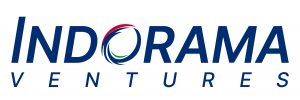 BANGKOK, Thailand — September 4, 2024 — Indorama Ventures Public Co. Ltd. (IVL), a global sustainable chemical producer, has successfully achieved ISCC+ certification for three of its fiber manufacturing sites. In addition to one already ISCC+ certified fiber plant, this marks a significant milestone in the company’s ongoing commitment to sustainability and circular economy practices. Across its entire business, a total of nine Indorama Ventures sites are now ISCC+ certified, offering a diverse range of sustainable products, including PTA, PET chips, fibers, and fabrics.
BANGKOK, Thailand — September 4, 2024 — Indorama Ventures Public Co. Ltd. (IVL), a global sustainable chemical producer, has successfully achieved ISCC+ certification for three of its fiber manufacturing sites. In addition to one already ISCC+ certified fiber plant, this marks a significant milestone in the company’s ongoing commitment to sustainability and circular economy practices. Across its entire business, a total of nine Indorama Ventures sites are now ISCC+ certified, offering a diverse range of sustainable products, including PTA, PET chips, fibers, and fabrics. The newly certified high-performance fiber portfolio will serve customers who require strong, durable technical yarns such as in the mobility, tire cords, airbags, industrial or mechanical rubber goods sectors. The new offerings include:
The newly certified high-performance fiber portfolio will serve customers who require strong, durable technical yarns such as in the mobility, tire cords, airbags, industrial or mechanical rubber goods sectors. The new offerings include: Renato Boaventura, chief commercial officer Mobility of Indorama Ventures’ Fibers business, stated: “In addition to our already ISCC+ certified viscose yarn plant in Czech Republic, we are proud that we now have three more sites with ISCC+ Certification, thanks to the diligent efforts of our teams. These certifications reinforce our commitment to expanding our portfolio of sustainable fibers for the tire and automotive industries, including airbags. Our new range of recycled and bio-polyamide and recycled PET will help our customers achieve their CO2 footprint goals with certified traceability of raw materials.”
Renato Boaventura, chief commercial officer Mobility of Indorama Ventures’ Fibers business, stated: “In addition to our already ISCC+ certified viscose yarn plant in Czech Republic, we are proud that we now have three more sites with ISCC+ Certification, thanks to the diligent efforts of our teams. These certifications reinforce our commitment to expanding our portfolio of sustainable fibers for the tire and automotive industries, including airbags. Our new range of recycled and bio-polyamide and recycled PET will help our customers achieve their CO2 footprint goals with certified traceability of raw materials.”
